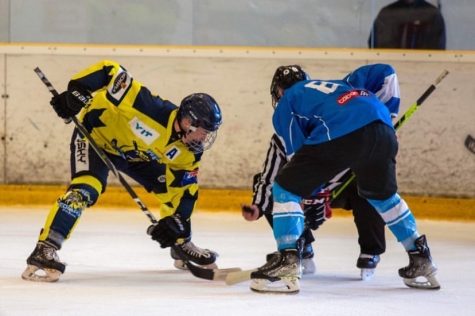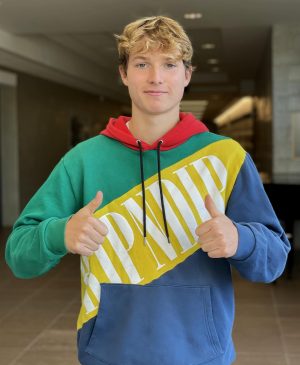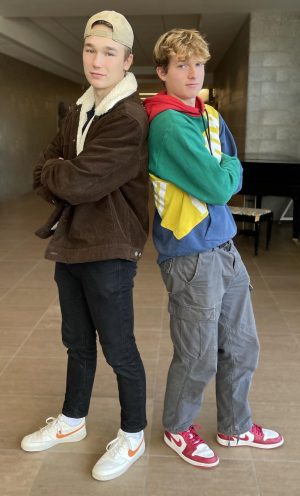Adam Kovar on Ice
December 7, 2022
Unless you’re a Czech Republic historian, it’s doubtful you know much about the country. To be fair, many people don’t. But our own foreign exchange student, Adam Kovar, gave me the chance to understand and admire the culture, tradition, and most importantly, the lively food of the Czech Republic.
Just 30 minutes shy of Prague is Adam’s hometown, Kaklik. He lives there with his mom, dad, and siblings.
Unlike us here at Rhinebeck, he doesn’t have the choice of getting breakfast at the cafeteria. Adam’s high school doesn’t offer our beloved hashbrowns or scrumptious french toast sticks.
He gets a good breakfast at home. He waits a couple of hours until lunch while in his classes. In between meals, in order to get through his school day, he will get food from some of the vending machine options! Adam let us in on what the machines his school look like:
“We also have some vending machines but there are strict rules—only healthy vending machines; it is not like you can buy cookies or some snacks or chips. Only sandwiches or something healthy.”
Kovar also explained that you aren’t allowed to buy coffee because the schools aren’t allowed to sell students caffeine. Apparently, the Czech Republic is taking a magnifying glass to the nutrition going into their kids’ systems.
In a decree set by the country, the Czech government stated that, “‘Sandwich-type bakery products’ sold in the schools shall not include mayonnaise, dressings, mustard or ketchup”. Take notes, America! We have school food initiatives, but we the U.S. doesn’t really have any laws like this.
After he munches on a sandwich, or a healthy vending machine item, the next meal is lunch! The lunches he consumes on a daily basis are much different than the ones provided at our school in the U.S.
Instead of tacos with meat and cheese, or pizza with salad, he gets fed…. Svíčková and Gulâś! Adam described the first dish as being a Czech staple. In its entirety, it consists of dumpling covered with cream sauce paired with meat, usually steak.
The second dish he mentioned, Gulâś, is made of red sauce and meat, but Adam prefers Svíčková. Based on the common rice and meat duo that appears in his school lunch, I think it’s clear that a lot of the meals are protein and carb heavy. Compared to the U.S., the meals have a lot in common. But they don’t have the hospitality of the Rhinebeck Cafeteria workers!
It’s important for Adam and his classmates to consume foods from all of the food groups in order to play their sports. In Adam’s case, he needs the nutrition to play his sport of choice, ice hockey. He basically eats, sleeps, plays, and repeats.
To my surprise, hockey isn’t crazy popular in his home country—only a couple of his friends at school play, and his brother is one of them! His practices and home games are at a local ice rink where he lives.

Normally, after a tough practice, some kids reward ourselves with common fast food places like Chipotle or McDonalds. In the Czech Republic, not many kids go out for dinner. Adam told me during our interview that most people his age tend to eat at home; some kids cook, but most of them have parents that cook. The meals they eat for dinner are pretty similar to the meals at lunch. They’re very classic, hardy meals.
But if for some reason they do go out, they do have access to American food chains, like many places in the world. But one place that I think many Rhinebeck Reality readers might not have heard of is Bageterie Boulevard. Adam said that the only way to compare it is to think of it as a sister sandwich shop to Subway. He likes it and so do his fellow Czech friends.
Whether you talk about food or hockey, Adam is a guy with stories to tell and laughs to share. So if you see him around, say hi!
Let him know if you ever try Svíčková and Gulâś!



